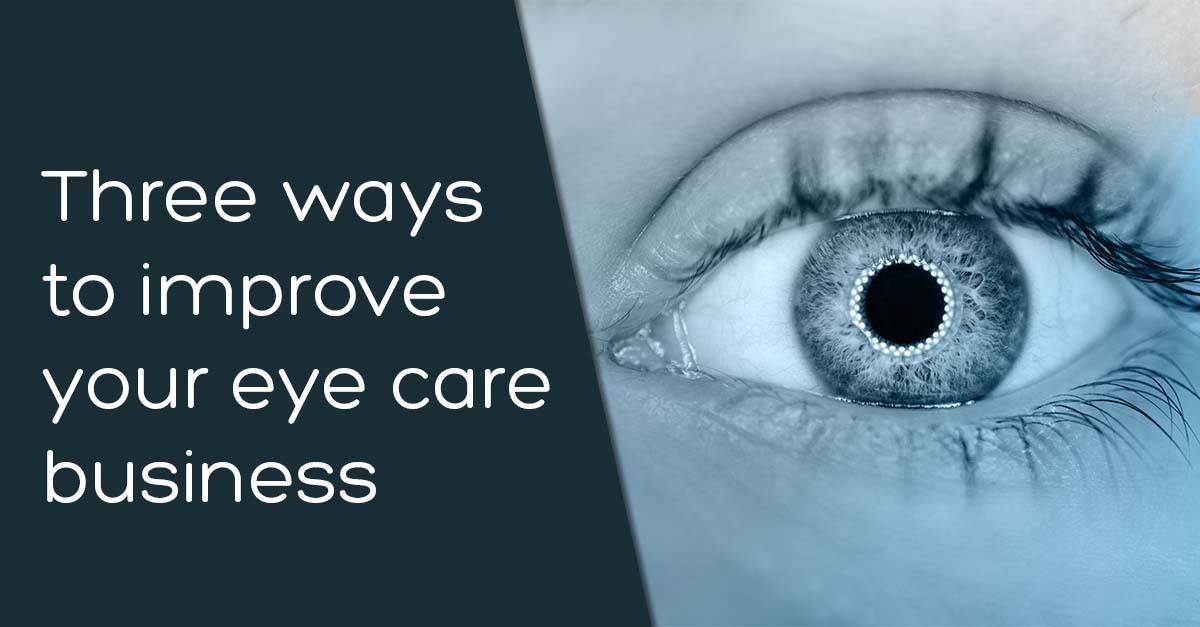Three ways to improve your eye care business
23rd December 2021

The eye care industry is evolving all the time with a range of techniques, instruments and diagnostic tools that enhance the care a practice provides for its patients.
However, there are many practices that may not have invested in these for a variety of reasons, whether that be due to expense or a preference for dealing with patients face to face.
As the threat of Covid-19 once again comes to the fore with the emergence of the new Omicron variant, there are some evolutions that eye care professionals should consider now as much as ever.
Eye care plans
There has been a tendency in the industry to overlook dry eye patients due to their condition not seeming as lucrative to treat in comparison to other patients, with some ECPs not seeing the value in spending the extra time required.
There is so much benefit, though, to treat as many of these patients as possible by way of an eye care plan.
If you can set up a plan where patients are paying $10-15 per month for their treatment, you can create a bread-and-butter revenue stream by bringing a significant proportion of relevant patients onto this plan.
This is also where clinics can tackle the concern of competition from online offerings. Adopting a monthly plan puts you in a much better place to compete with the online price point and inspires loyalty among your patients. A patient who is on a monthly plan with access to effective aftercare is far less likely to look elsewhere for their treatment.
Telemedicine
Having significant numbers of patients on an eye care plan was a welcomed revenue stream for some clinics while they were unable to see patients in person during the pandemic. Telemedicine software, such as AOS 3.1, has been a useful addition to these plans as a way of delivering aftercare when in-person appointments have not been possible.
There will be many professionals out there who much prefer seeing patients in the clinic when they can. Incorporating telemedicine into your practice can do so much to improve time efficiency, as well as patient experience. Carrying out appropriate appointments remotely can save so much time for both patient and practitioner.
As we all get used to conducting more parts of our everyday lives remotely, the eye care industry has been no different, and some patients are starting to see telehealth as an expectation rather than a perk. There will be many who have still not been introduced to telehealth at all yet, though, meaning you still can ‘wow’ them with the technology and how it will benefit them.
Anterior imagery
Despite the technologies currently available, several practices still don’t have at least one way of taking anterior images, such as a digital slit lamp. Given they can cost tens of thousands of dollars, there is an understandable hesitance towards them as an investment. However, they bring major benefits when it comes to patient education and management.
Photo documentation is a great way of visualising the issues patients are experiencing, as well as showcasing the impact of any treatment they’re receiving. This helps to retain patients at your practice and can also help to attract patients in the first instance – many will never have seen images of the back of their eye before, which is something you can demonstrate again for that ‘wow’ factor.
If you’re not prepared to make such an investment, you might find a solution in the form of a mobile slit lamp adapter. These attach to the eyepiece of the equipment and, using AOS 3.1, store images taken on a smartphone securely on the cloud for the patient and ECP to access as appropriate.
